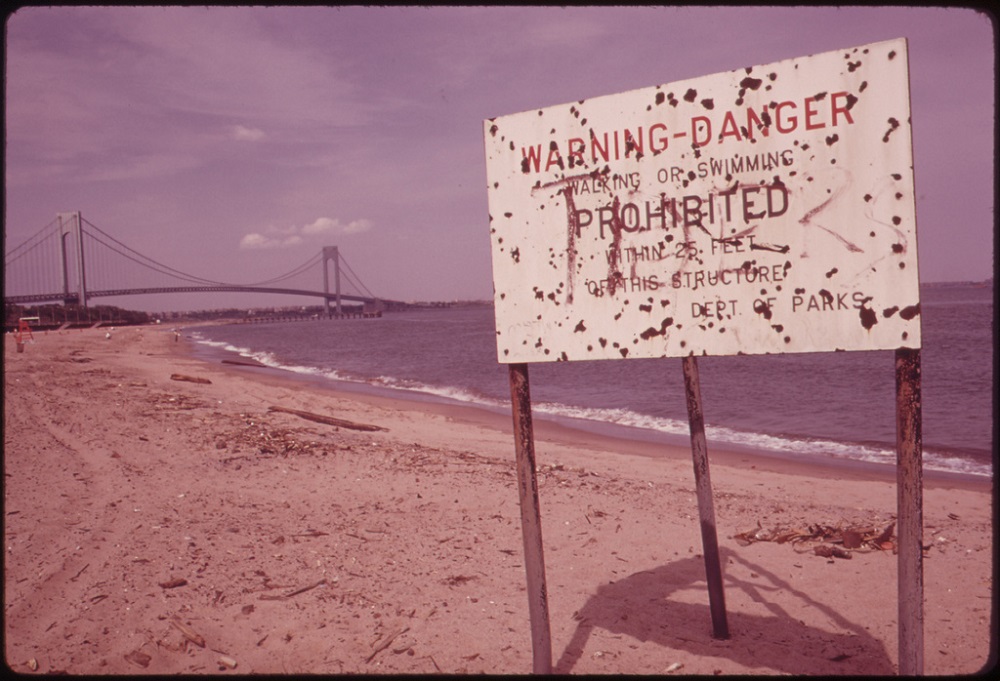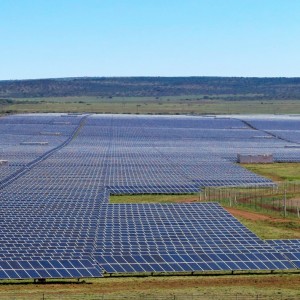By Codi Kozacek
Circle of Blue
On August 5, a costly mistake by an Environmental Protection Agency cleanup crew spilled millions of liters of toxic mine waste into Colorado’s Animas River. Just the day before the Animas mess, the National Oceanic and Atmospheric Administration reported that the Gulf of Mexico dead zone, an expanse of water without enough oxygen to support fish and other marine animals, covered an area larger than Connecticut. Two days before that marked the one-year anniversary of the Toledo water crisis, when more than 400,000 people in the Ohio city lost their drinking water for several days due to a toxic algal bloom in Lake Erie.
The list goes on, encompassing chemical spills and coal ash breaches in the East, oil pipeline ruptures in the Midwest and South, dying fisheries and nitrate contamination in the Southeast, even sea lions dying along the Pacific coast because of toxic algae blooms. All are evidence that water pollution is still a dismal reality in the United States more than four decades after Congress passed the Clean Water Act and vowed to “restore and maintain the chemical, physical, and biological integrity of the nation’s waters.”
The urgent and deepening neglect of America’s water quality does not reflect the strength of the clean water law itself. Since its enactment in 1972, the Clean Water Act’s requirements and enforcement achieved steady improvement in the quality of rivers, lakes, wetlands, and coastal areas in every region of the nation. The law’s statutory design has been copied by dozens of nations. Raw sewage, garbage, and factory waste do not flow unchecked into lakes and streams. Dead pig carcasses do not float through major drinking water sources as they do in China. Americans swim in the Hudson River in New York and along the Lake Michigan beach in Chicago. Pittsburgh, Cincinnati, Louisville, and Owensboro are developing new parks and neighborhoods along the shoreline of the Ohio River, which a generation ago was too fouled and smelly to get close to.

A sign warns swimmers of polluted water at Staten Island Beach in 1973, one year after Congress passed the Clean Water Act.Click image to enlarge.
The litany of major new pollution incidents highlights not only expansive gaps in the nation’s most important water law, they describe a decidedly powerful political view that the country has done enough. The Clean Water Act has not been amended in 28 years. During that legislative hiatus, the country grew by nearly 80 million people, developed concentrated manure-producing dairy, livestock, and poultry production factories, invested inadequate amounts in aging and undersized sewage treatment plants, and watched indifferently as a flood of polluted stormwater washed off the tens of millions of hectares of paved suburbs that the country constructed in what had been farm and forested rural areas.
The consequences are all too apparent. More than half of the country’s lakes and rivers are so polluted they do not support safe fisheries or places to swim, according to the latest state and national water quality assessments. Most of these impairments come from farm fields, urban spaces, and other so-called nonpoint sources of pollution that avoid regulatory oversight from the Clean Water Act. In addition, the law does not address climate change, the disposal of fracking wastewater, the administration of water rights during extreme droughts, and other water supply and quality shortcomings that lawmakers could not anticipate 43 years ago, or 28 years ago.
Still, those issues are real today but have produced no legislative interest in Congress.
“Twenty-five years have passed since [the Clean Water Act] was amended in comprehensive fashion and more than a little legislative fine-tuning must be done to complete the task that began in 1972,” William Andreen, a professor at the University of Alabama School of Law, wrote in 2013 on the University of Pennsylvania Law School’s Reg Blog. “While it is true that more robust administrative action could improve the effectiveness of the Act in a number of ways, the most serious problems cannot be solved without congressional action.”
“In fact,” Andreen noted, “the momentum has shifted to those who would weaken the protections provided by the Clean Water Act.”
One place in the federal government that recognizes the need to update water quality standards is the White House. President Obama and his aides at the Environmental Protection Agency and other government water oversight offices have deployed their executive authority to respond to new pollution threats where they can. The Obama administration has put into place new rules for overseeing coal ash piles, toxic drainage from coal mines, and manure discharges from factory farms. In May, the administration responded to a 2006 Supreme Court ruling that limited the government’s jurisdiction of some wetlands with a proposal that clarifies government authority to apply Clean Water pollution standards to small streams and wetlands.
The proposal is the most thorough update of the Clean Water Act since 1987 and prompted a storm of protest from the administration’s Republican opponents in Congress and the states. Both the Senate and the House of Representatives introduced bills to block the new water rule. More than half of the states are involved in legal challenges to the rule.
Meanwhile, the EPA asserts that it is overseeing clean water programs with with smaller budgets and fewer staff members.

Graphic by Kaye LaFond/Circle of Blue
These maps show the leading causes of impaired surface water classifications by state under the Clean Water Act.Click image to enlarge.
“Despite tremendous progress, we still have much work to do,” the EPA wrote in a statement to Circle of Blue. “Many of the nation’s waters (55% of assessed rivers and streams, and 70% of assessed lakes) are not meeting standards states have set for them. Many of these problems will require expanded treatment of sewage and industrial discharges. But the majority of pollution problems are caused by runoff from agricultural sites, city streets, rural areas, and other diffuse sources.”
Reforming the Clean Water Act
So what might a Clean Water Act designed for the 21st century—one that addresses both legacy pollution and emerging problems—look like?
A meaningful way to address polluted runoff, so-called “nonpoint source” pollution, is arguably the law’s most glaring omission. The current approach, which relies on voluntary compliance, has not worked, according to the University of Alabama’s Andreen. Even the Total Maximum Daily Load (TMDL) program—which sets restrictions on the amount of nutrients flowing into a water body—leaves regulators with no stick to force nonpoint-source polluters to comply.
“Eventually, you end up with a horrible situation where you’re not complying with water quality standards, and the only choice is to make the point sources comply even more, or clean up their act even more at incredible cost, or to do more enforcement against the point sources,” Andreen told Circle of Blue. “In my view, the nonpoint community has to do their share, and one way to do it is to have a best management practice that is enforceable.”
An enforcement program for nonpoint source pollution could take form within the TMDL program and could be designed and run by the states with EPA oversight, Andreen said. The EPA could provide a menu of technology-based best management options that the states could choose from, and the states would then need to enforce compliance with the practices. The program would need federal funding to support farmers and other small-scale nonpoint polluters and give them time to comply with new regulations.
According to Andreen, the Clean Water Act could also be adapted to fit changing conditions by:
- Ensuring enough water stays in rivers and streams to support their biological functioning. “You have no water quality if you have no water, or so little water that nothing can survive in a healthy way, or not enough water that things can spawn the way they normally do in the spring,” he said. This could include funding for states to buy water rights for the environment, and for monitoring and research.
- Improving investments in water infrastructure, which is aging and serving a growing population. The process for choosing and approving projects should be public and transparent.
- Including more green infrastructure initiatives and improving efforts to monitor the performance of stormwater management plans.
- Addressing large, concentrated animal feeding operations (CAFOs) in a more meaningful way and closing loopholes.
- Taking out the word “navigable waters” in the Clean Water Act language and making it clear that the law covers the hydrological cycle from headwaters to tributaries to wetlands.
- Addressing climate change. “[Climate change] is creating an imperative, I think,” Andreen said. “Storms are going to get worse and more severe in places. More severe precipitation means more runoff, more stormwater. We shouldn’t just settle until things start going to heck in a hand basket. We need to start planning for it now.”
Reforming the Clean Water Act, however, is not on the table in Congress right now.
“Congress couldn’t have envisioned everything back in 1972,” Andreen said. “The act hasn’t been amended in a comprehensive way since 1987. It’s been an absurd period of time not to have been fine-tuned and brought up to date.”
Lingering Water Pollution
In the meantime, water pollution in the United States inhibits the use of enough river miles to stretch to the moon and back, and enough lake acres to cover an area larger than Switzerland. These waters are listed as “impaired” by the states and the EPA.
For rivers and streams, the most common pollutants are bacteria, including E. Coli and fecal coliform, followed by sediments, nutrients like nitrogen and phosphorus, and mercury. For lakes, mercury contamination is by far the most prevalent pollution problem, impairing more than twice as many acres as nutrients, the next most common pollutant. The Clean Water Act addressed most end-of-pipe sources of these pollutants. What remains are vast tracts of farmland and urban spaces where rain runoff picks up contaminants, or, in the case of mercury, air pollution that can travel from as far away as China and India.

Graphic by Kaye LaFond/Circle of Blue
These maps show percentages of surface waters classified as impaired under the Clean Water Act by state.Click image to enlarge.
While the Clean Water Act calls for actions to address nonpoint sources of pollution, it does not include a regulatory mechanism. As a result, efforts to clean up nonpoint pollution have so far struggled to make significant progress. Despite large-scale, multi-state projects to restore Chesapeake Bay and reduce the Gulf of Mexico dead zone, for example, water quality has remained stubbornly poor. This year, the Gulf dead zone stretched across nearly 17,000 square kilometers (6,474 square miles), according to the National Oceanic and Atmospheric Administration; the target size is 4,900 square kilometers (1,900 square miles). Chesapeake Bay, while showing signs that pollution is declining and conditions are improving, still scored a D+ on its annual water quality assessment.
Individual states have been slow to implement controls. In April, Ohio became the first state to ban manure and fertilizer applications on frozen ground when it passed a law in response to the Toledo water crisis.
“The EPA has the wherewithal to address those issues, it just needs to have the political will to do it,” Bob Irvin, president of conservation organization American Rivers, told Circle of Blue. “Congress needs to both allow the EPA to do this without interference and provide the funding to make this happen. It shouldn’t have to take a city the size of Toledo to have its drinking water shut down for several days, as happened last summer, to get us to wake up to the need to address these problems.”
There is growing interest in voluntary programs to cut nutrient pollution, much of which comes from agricultural lands, but many farmers are concerned about regulations, according to Lynn Scarlett, global managing director for public policy at The Nature Conservancy and former Deputy Secretary of the Interior during the second Bush administration.
“I don’t think the issue is either or,” Scarlett told Circle of Blue. “We’ve seen voluntary measures being very successful in some instances. One of the challenges is when you are dealing with large watersheds, how do you get everyone engaged? That’s where incentive programs can be really important.”
“One key to the success of any of these collaborative endeavors is resources and funding for them,” Scarlett continued. “The Farm Bill has put forth lots of funds over many, many years to contribute to best management practices and advancing some of these efforts, and it is important that that continues. While those help invest in farms and farmers, what we also need are funds to help invest in the collaborative processes themselves.”








